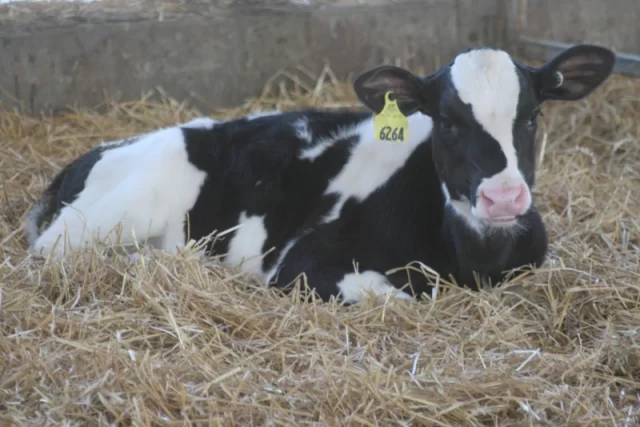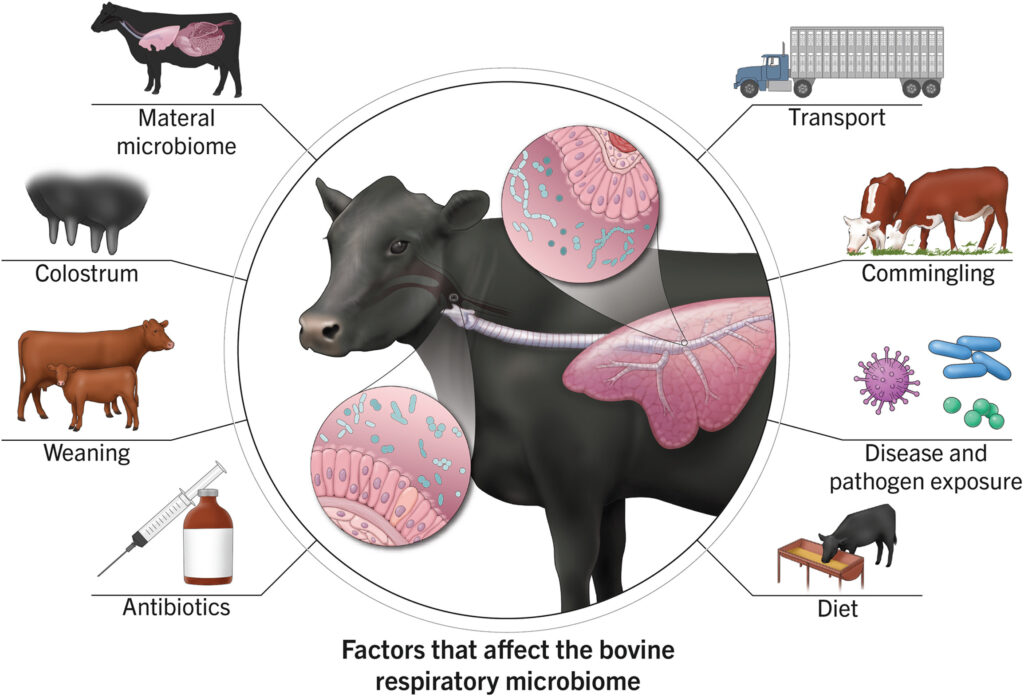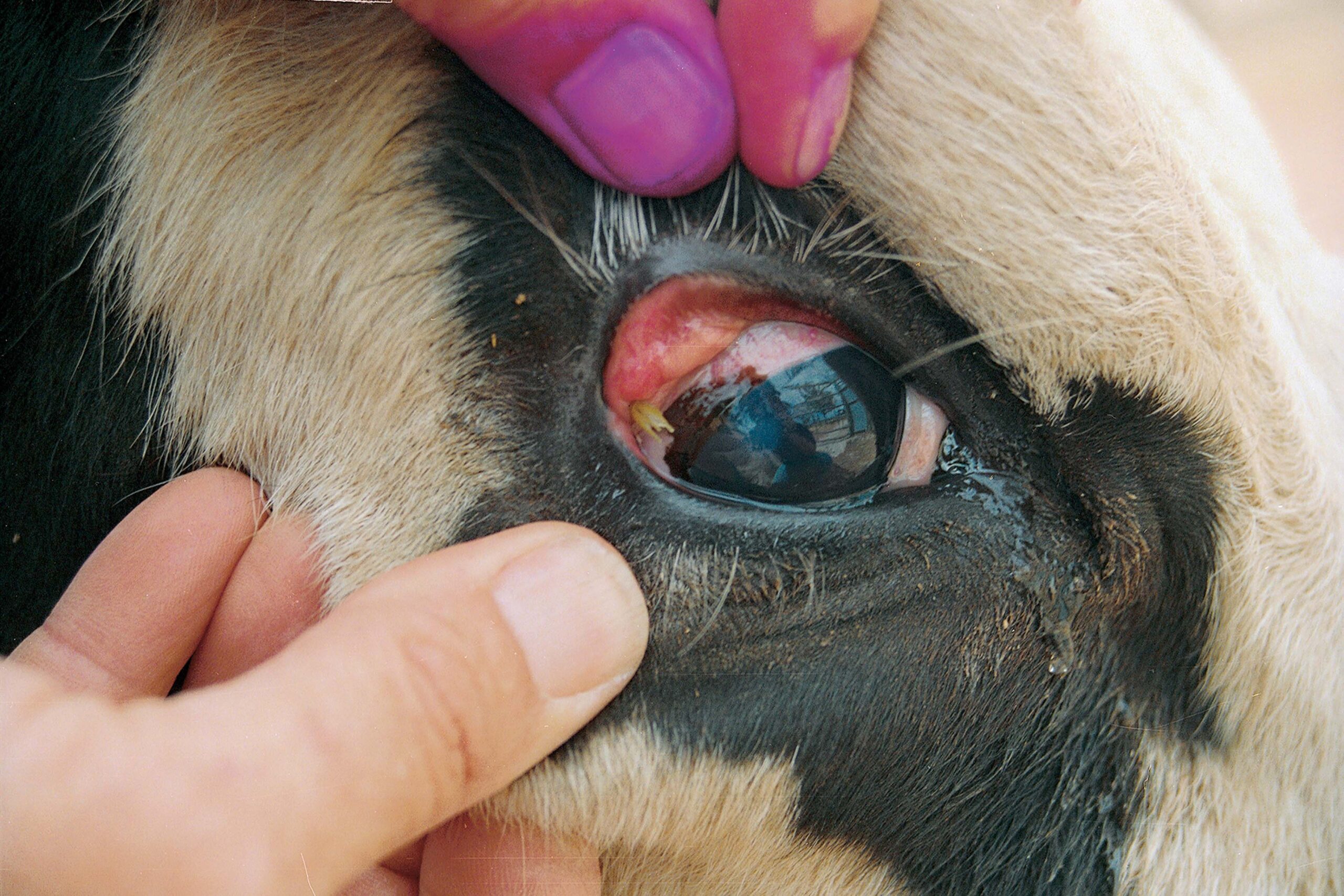
Bovine Respiratory Disease (BRD)
A Silent Threat to Cattle Health and Productivity
Bovine Respiratory Disease (BRD), often referred to as “shipping fever” or “pneumonia in cattle,” is one of the most significant and costly health challenges facing the global cattle industry. This complex disease affects the respiratory system of cattle, leading to severe economic losses due to reduced productivity, increased veterinary costs, and high mortality rates. BRD is particularly prevalent in feedlots, dairy farms, and among young calves, making it a critical issue for farmers, veterinarians, and researchers alike. In this article, we will explore the causes, symptoms, prevention, and management of BRD, as well as its impact on the cattle industry.
About: Bovine Respiratory Disease
BRD is a multifactorial disease, meaning it is caused by a combination of factors, including pathogens, environmental stressors, and host immunity. It primarily affects the lower respiratory tract of cattle, leading to inflammation, lung damage, and, in severe cases, death. The disease is most common in young cattle, particularly those transitioning from pasture to feedlots or undergoing transportation, which is why it is often called “shipping fever.”
BRD is responsible for significant economic losses in the cattle industry. According to studies, it accounts for over 50% of all feedlot illnesses and 70-80% of all feedlot deaths. The costs associated with BRD include treatment expenses, reduced weight gain, and decreased milk production, making it a top priority for cattle producers.
Causes of BRD
BRD is caused by a combination of viral and bacterial pathogens, often exacerbated by environmental and management factors. The primary pathogens involved in BRD include:
- Viruses:
- Bovine Herpesvirus-1 (BHV-1): Causes Infectious Bovine Rhinotracheitis (IBR), which weakens the immune system and predisposes cattle to secondary bacterial infections.
- Bovine Viral Diarrhea Virus (BVDV): Suppresses the immune system, making cattle more susceptible to respiratory infections.
- Bovine Respiratory Syncytial Virus (BRSV): Directly damages the respiratory tract, leading to severe pneumonia.
- Parainfluenza Virus-3 (PI3): Often involved in the early stages of BRD, causing mild respiratory symptoms.
- Bacteria:
- Mannheimia haemolytica: The most common bacterial cause of BRD, known for producing toxins that damage lung tissue.
- Pasteurella multocida: Another significant bacterial pathogen that contributes to pneumonia.
- Histophilus somni: Causes respiratory and systemic infections, including pneumonia.
- Mycoplasma bovis: A challenging pathogen to treat, often leading to chronic respiratory disease.
- Environmental and Management Factors:
- Stress: Transportation, weaning, overcrowding, and poor ventilation can weaken the immune system, making cattle more susceptible to BRD.
- Poor Nutrition: Inadequate nutrition can compromise the immune system, increasing the risk of infection.
- Weather Changes: Sudden temperature fluctuations, humidity, and poor air quality can exacerbate respiratory issues.
Symptoms of BRD
Early detection of BRD is critical for effective treatment and management. However, the symptoms can vary depending on the severity of the infection and the pathogens involved. Common signs of BRD include:
- Respiratory Symptoms:
- Coughing
- Nasal discharge (clear, white, or yellowish)
- Rapid or labored breathing
- Wheezing or grunting sounds
- Systemic Symptoms:
- Fever (body temperature above 104°F)
- Lethargy or depression
- Reduced appetite or feed intake
- Weight loss or poor growth
- Advanced Symptoms:
- Open-mouth breathing
- Drooping ears
- Isolation from the herd
- Death in severe cases
Cattle with BRD often exhibit a combination of these symptoms, and early intervention is crucial to prevent the disease from progressing to a severe or fatal stage.

Diagnosis of BRD
Diagnosing BRD can be challenging due to its multifactorial nature and the overlap of symptoms with other diseases. Veterinarians typically rely on a combination of clinical signs, history, and diagnostic tests to confirm BRD. Common diagnostic methods include:
- Physical Examination: Checking for fever, respiratory distress, and other clinical signs.
- Blood Tests: To assess white blood cells counts and detect systemic infections.
- Nasal Swabs or Lung Samples: To identify specific viral or bacterial pathogens.
- Ultrasound or Radiography: To evaluate lung damage and inflammation.
Prevention and Management of BRD
Preventing BRD requires a comprehensive approach that addresses the various factors contributing to the disease. Key strategies include:
- Vaccination:
- Vaccines are available for many of the viral and bacterial pathogens involved in BRD. A well-designed vaccination program, tailored to the specific risks of the herd, can significantly reduce the incidence of BRD.
- Common vaccines include those for BHV-1, BVDV, BRSV, PI3, and Mannheimia haemolytica.
- Biosecurity Measures:
- Isolate new or sick animals to prevent the spread of pathogens.
- Maintain clean and disinfected facilities to reduce the risk of infection.
- Stress Reduction:
- Minimize stress during transportation, weaning, and handling.
- Provide adequate space, ventilation, and comfortable housing.
- Nutritional Support:
- Ensure cattle receive a balanced diet to support their immune system.
- Provide access to clean water and high-quality feed.
- Early Detection and Treatment:
- Monitor cattle closely for signs of BRD, especially during high-risk periods.
- Administer antibiotics and anti-inflammatory drugs as prescribed by a veterinarian.
Economic Impact of BRD
The economic impact of Bovine Respiratory Disease (BRD) on the Indian cattle industry is significant, causing substantial financial losses for dairy and livestock farmers. While exact national estimates are limited, BRD leads to increased expenses for treatment, including antibiotics, anti-inflammatory drugs, and veterinary services. It also results in reduced productivity, with lower milk yields in dairy cows and slower weight gain in beef and buffalo farming. In severe cases, BRD causes mortality, leading to direct financial losses for farmers. Additionally, the disease increases labor costs as extra efforts are required for monitoring and treating affected animals. Implementing effective preventive measures such as timely vaccinations, better farm management practices, and early disease detection can help reduce these losses and improve overall herd health and productivity.
The Future of BRD Management
Advancements in research and technology are paving the way for more effective BRD management. Some promising developments include:
- Improved Vaccines: Researchers are working on next-generation vaccines that provide broader and longer-lasting protection against BRD pathogens.
- Diagnostic Tools: Rapid diagnostic tests and portable imaging devices are being developed to enable early and accurate detection of BRD.
- Genetic Selection: Breeding cattle with enhanced resistance to respiratory diseases could reduce the incidence of BRD in the future.
Conclusion
Bovine Respiratory Disease remains a formidable challenge for the cattle industry, but with proper understanding, prevention, and management, its impact can be significantly reduced. By prioritizing vaccination, stress reduction, and early detection, cattle producers can protect their herds from this costly and devastating disease. As research continues to advance, the future holds promise for even more effective strategies to combat BRD, ensuring the health and productivity of cattle for generations to come.
For farmers and veterinarians, staying informed and proactive is the key to winning the battle against BRD. Together, we can safeguard the well-being of cattle and secure the sustainability of the cattle industry.

















